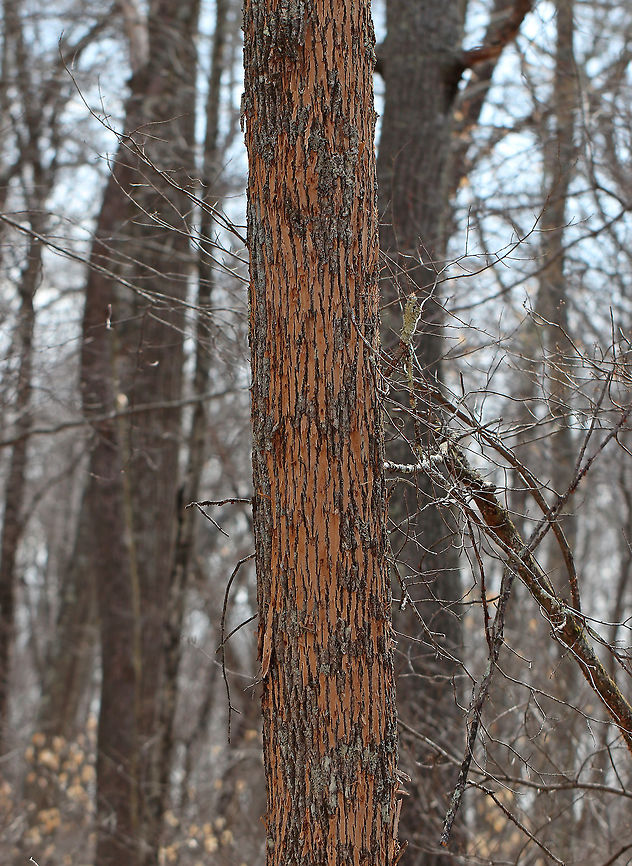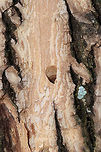
Woodpecker Damage (Flecking)
I'm not sure what kind of tree this is, possibly Ash (Fraxinus sp.). It had extensive flecking caused by woodpeckers, which is a sign that the tree had lots of insect larvae. Of course, woodpeckers will attack nearly any tree with insect larvae, such extensive damage is often a sign of infestation with the dreaded Emerald Ash Borer (Agrilus planipennis). I also found plenty of exit holes, many of which were D-shaped.
Habitat: deciduous forest

No species identified
The species on this photo is not identified yet. When signed in, you can identify species on photos that you uploaded. If you have earned the social image editing capability, you can also identify species on photos uploaded by others.
